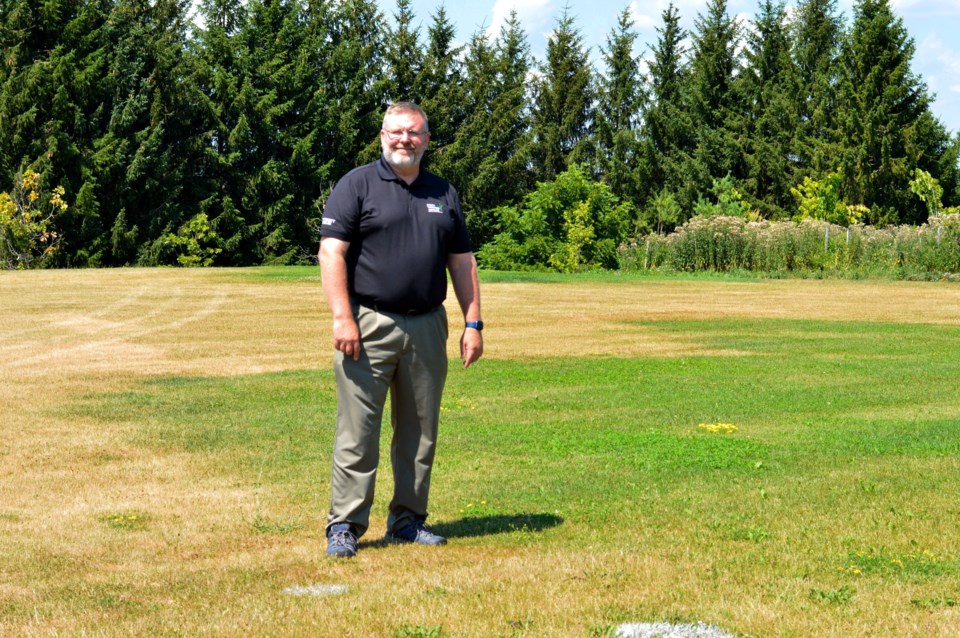Grass is meant to be played on, not just looked at, says the director of the Guelph Turfgrass Institute.
A drought in Guelph with very little rainfall recently and water restrictions at level red, meaning no lawn watering, could leave grass turning yellow and that's not necessarily a bad thing.
“Most turf grasses, not all, will go dormant,” said Eric Lyons, director of the Guelph Turfgrass Institute.
When grass goes dormant, it is survival mechanism and if watered gradually, it will slowly turn green again. Types of grass found in the Guelph are the Kentucky blue grass and perennial rye grass. Perennial rye grass can withstand the cold winters and dry heat spells.
Lyons explains how to properly take care of your lawn during a drought and how other factors impact your lawn, if you're looking to maintain it.
“Depending on the species and the heat and the amount of traffic and the presence of chinch bugs or grubs. There is a time period that (lawns) will stay dormant and be able to come back,” said Lyons.
Chinch bugs feed on the sap from grass. The damage they cause can be mistaken from drought damage with yellow or brown patches on a lawn.
Lyons' wife read him information about watering a couple of days ago and he replied “Well, we can fill our pool, we can water our trees, we can water our bedding plants, we can water our garden but we’re not allowed to water our lawn.”
He hasn’t watered the front lawn of his house in 10 years since there isn’t a lot of traffic, and it has very few weeds. His backyard has a lot more weeds and needs more maintenance.
“When the city says you can't water your lawn, they’re basically saying it’s aesthetic. It’s not,” said Lyons.
“The whole point of having lawns in cities. The whole point of having parks covered in turf isn’t to look at them, it’s to use them.”
Brown, dry turf is not as safe for children to play on because it is hard ground, so if someone were to fall they could be injured. With green turf, it is softer and you can slide on it, explained Lyons.
Before a drought starts, water your lawn as infrequently as possible, once a week maximum.
Scientists refer to the bucket method, it’s better to have a larger bucket to fill up less frequently because you’ll have a greater quantity of water for when you need it. Whereas a smaller bucket filled everyday only has a specific amount of water.
How often you mow your lawn can also affect the state of your grass. If the grass is too long and the mower can’t lift the grass and cut it, the blades of grass will layover and what is underneath will die.
Ideally two inches of grass length is ideal, said Lyons.
“'No mow May' means, 'no play June,'” he said.
Leaving leaves on your lawn in the fall kills the grass because it holds moisture and creature fungus.
Keeping up to date with fertilizer before a drought will have a lesser negative affect on your lawn, he said.
Most of the time grass will come back. The key is being strategic about how you use your yard and make decisions of when you water it, suggested Lyons.
“Water put on your lawn is not wasted, if you use your lawn. If you enjoy it. It cools your house, it cools the environment,” he said.
